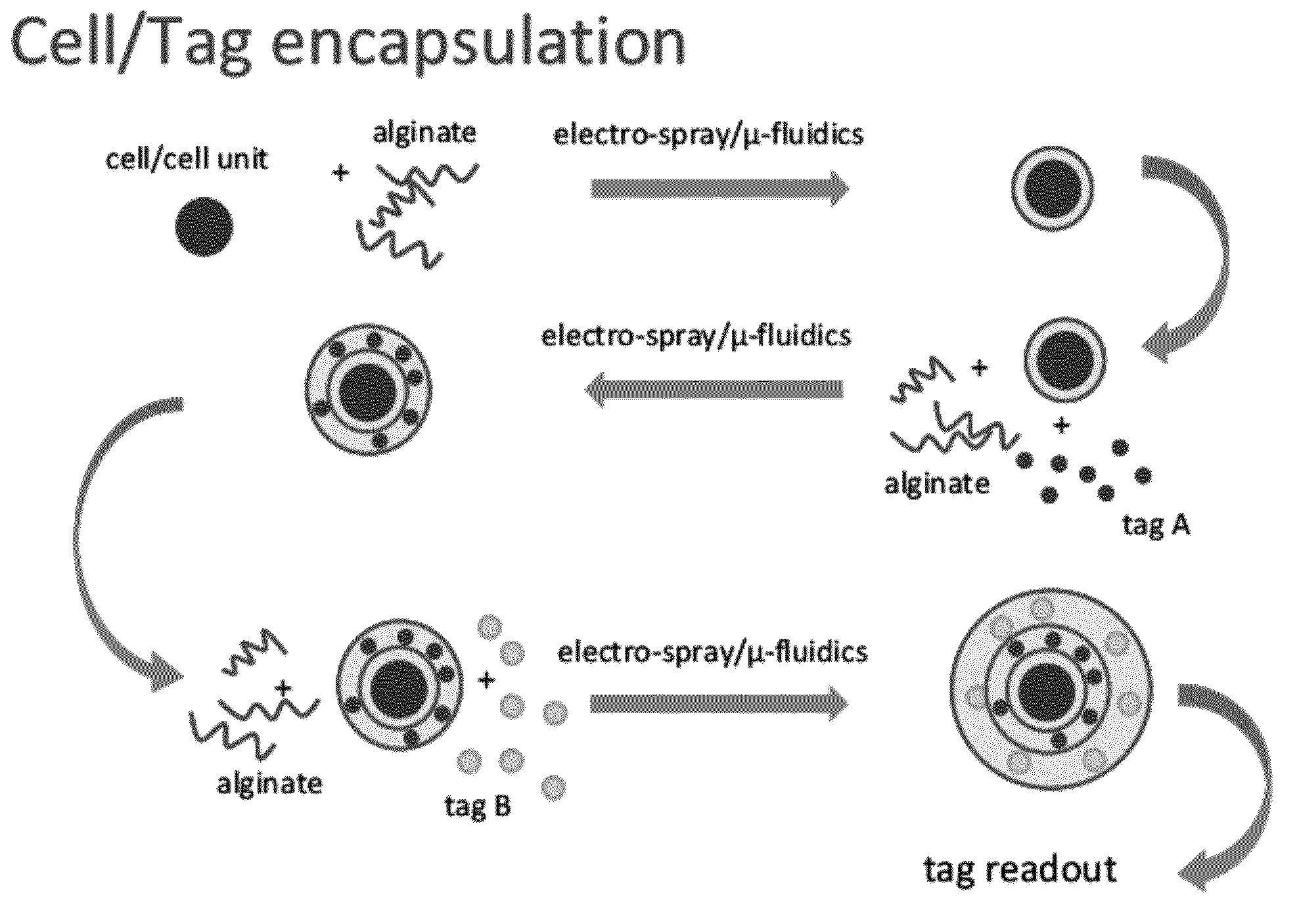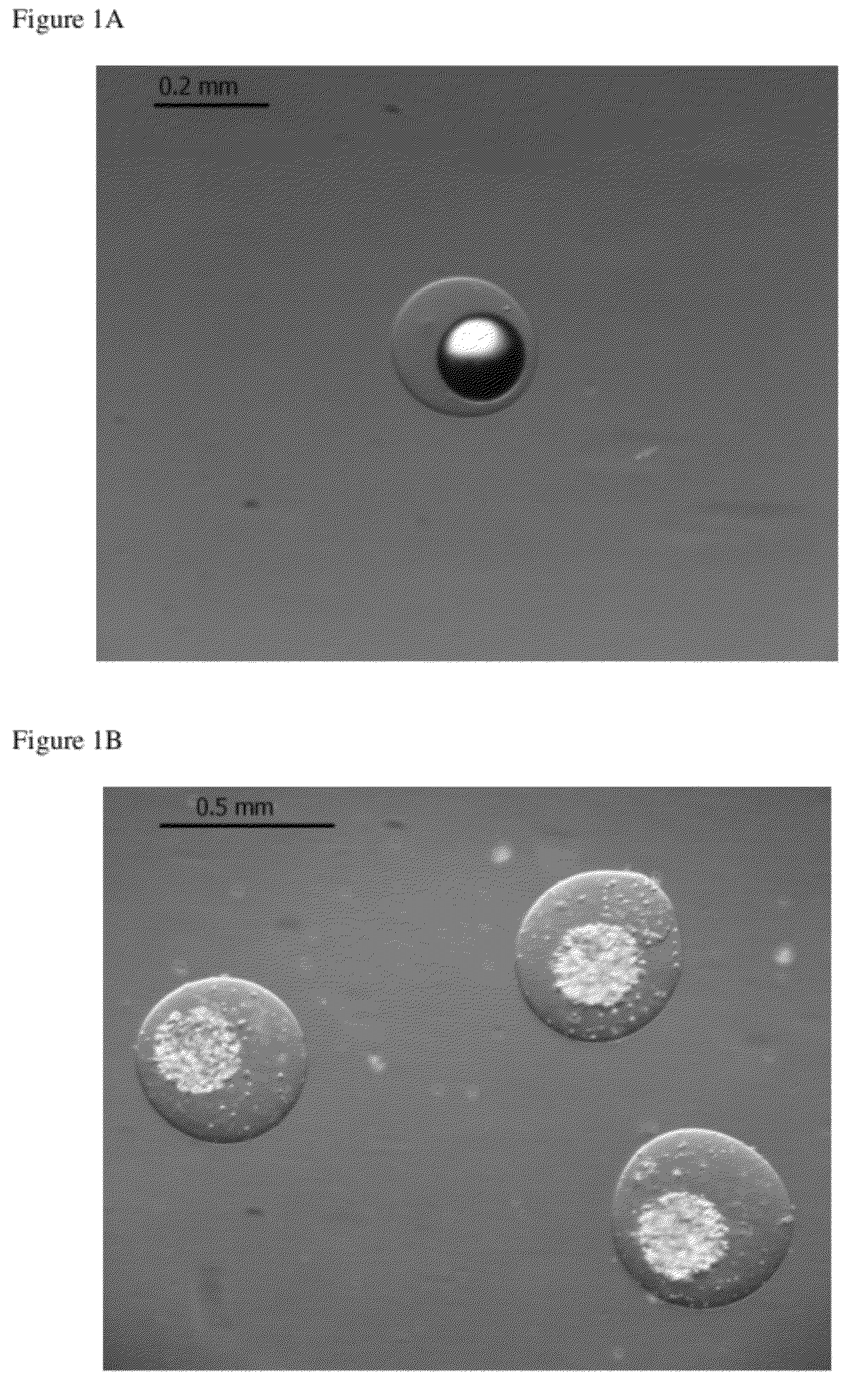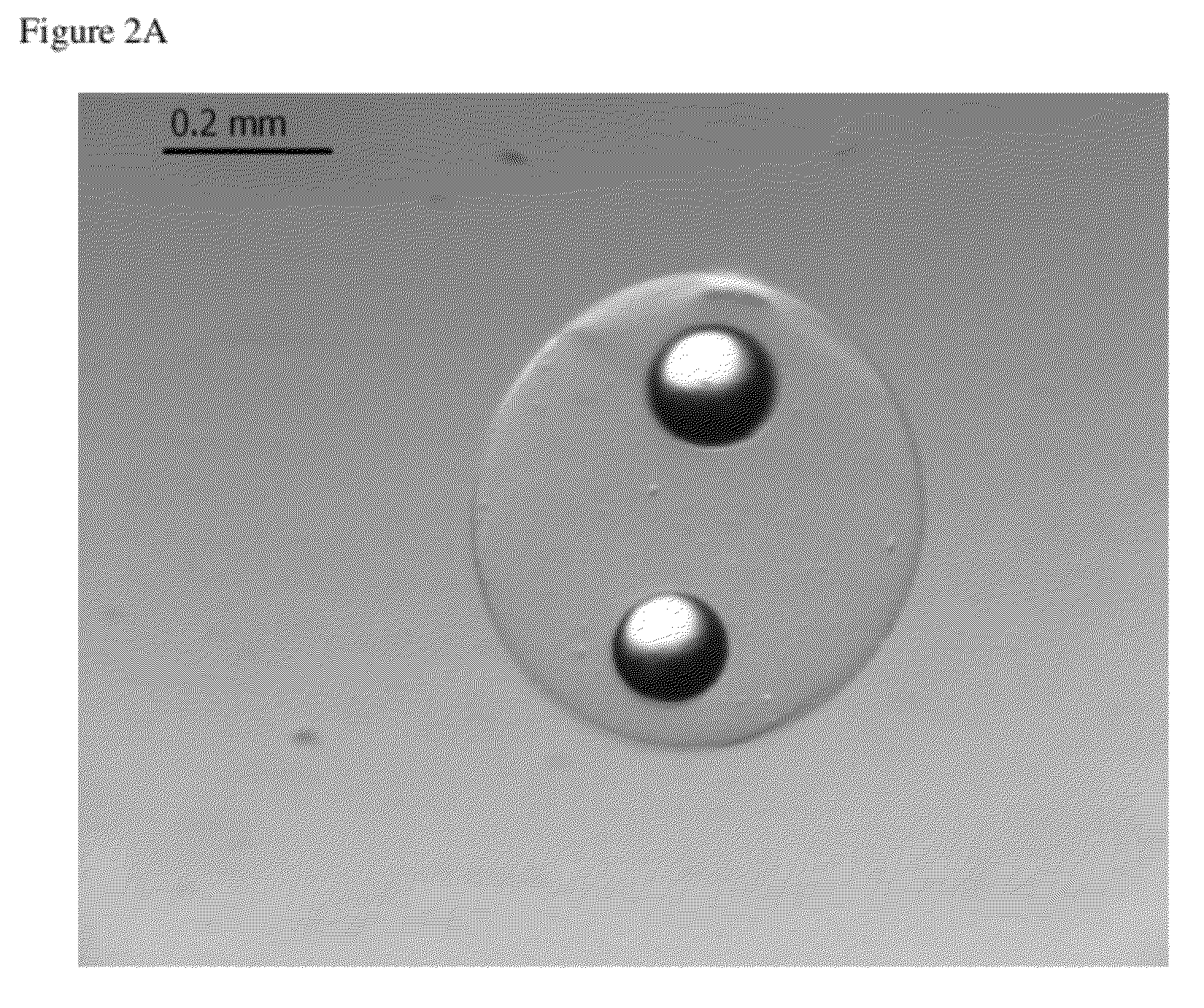Nested cell encapsulation
a cell and encapsulation technology, applied in microcapsules, enzymology, instruments, etc., can solve the problems of difficult to follow the course of any one cell through the multiplicity of possible combinations of reaction conditions, and none of these methods have been suggested to be applicable to cell labelling
- Summary
- Abstract
- Description
- Claims
- Application Information
AI Technical Summary
Benefits of technology
Problems solved by technology
Method used
Image
Examples
example 1
Preparation of an Alginate Solution
[0176]Alginate in powder form is mixed into de-ionized water or phosphate buffered saline CaCl2MgCl2(PBS-), a PBS solution without Ca or Mg ions, to give a mixture by weight percentage of between 1-5% Alginate. About 20 ml of 3% dissolved in PBS per g of microcarriers is used. The mixture is left to stir until completely dissolved.
[0177]The solution is then autoclaved or sterile filtered to ensure that the solution is sterile.
Preparation of a Solidifying Solution
[0178]Ca2+, Sr2+ or Ba2+ ions will crosslink the alginate solution into a hydrogel. A solidifying solution is made by dissolving CaCl2 in water at a concentration of 200 mM. The solution is stirred with a magnetic stirrer until dissolved completely.
Preparation of the Encapsulator
[0179]Encapsulation is performed using a NISCO Encapsulator (NISCO Engineering AG, Switzerland). If not done before, the machine and all its components are cleaned and disinfected, using new silicone piping.
[0180]A ...
example 2
[0193]Cell units are coated with alginate in accordance with Example 1, and subsequently coated with polyelectrolytes using a LbL approach as follows.
[0194]The polyelectrolytes, in this example alginate and PLL, are charged negatively and positively charged respectively. In essence, Example 1 provides the following four steps:
[0195]1. Prepare alginate suspension with cells
[0196]2. Prepare spraying equipment
[0197]3. Make basic alginate bead
[0198]4. Wash bead
[0199]The beads are then coated with PLL by suspending in a PLL solution. The charge difference attracts the PLL to the alginate. Optionally, a step can be included in which charged tags are attached to the alginate, to label the first encapsulation.
[0200]5. Suspend in a solution containing poly-1-lysine (PLL)
[0201]a. A solution of 0.1% used for as little as 30 s will already give the desired effect of creating an extremely thin film on the surface of the alginate bead. Changing the concentration or the time the beads are suspende...
PUM
| Property | Measurement | Unit |
|---|---|---|
| Temperature | aaaaa | aaaaa |
| Fluorescence | aaaaa | aaaaa |
Abstract
Description
Claims
Application Information
 Login to View More
Login to View More - R&D
- Intellectual Property
- Life Sciences
- Materials
- Tech Scout
- Unparalleled Data Quality
- Higher Quality Content
- 60% Fewer Hallucinations
Browse by: Latest US Patents, China's latest patents, Technical Efficacy Thesaurus, Application Domain, Technology Topic, Popular Technical Reports.
© 2025 PatSnap. All rights reserved.Legal|Privacy policy|Modern Slavery Act Transparency Statement|Sitemap|About US| Contact US: help@patsnap.com



